Demystifying Data and Analytics for Editors and Publishers
Part 1 of a 3 Part Series
Part One: The Digital Experience and Introduction to Data and Analytics
The Digital World has created significant opportunities and challenges for any organization but particularly those who must adjust to the new ways their “readers” consume, share and interact with digitally published content. Content is everywhere. It multiplies by the day, primary source, secondary source, opinions, comments, sentiment, word of mouth, great content, ok content, etc.
It is a different world and one no one has really adjusted to it all yet. It is unlikely any single individual has the physical time or the mental capacity to consume all that is desired or available.
All of the voices digitally consuming, amplifying, sharing and commenting are spreading words and opinions about you and your content in ways never seen before. All of those voices have instantaneous influence, have extensive reach and can have a significant impact on you, your brand and your content and oh yeah, your REVENUE. 
You in turn have the opportunity, through analytics, to gain insight to what is being said, what is being consumed, how it is being consumed and ultimately respond to your readers desires in ways never before possible.
Content creators need to reach their current readers, create new readers and measure and monitor the “digital” audience to ensure the content is well received and resonating.
Businesses live or die by word of mouth of their readers and customers.
As a result, there should not be a digital content strategy, editorial plan or calendar without a measurement strategy. My intent today is to demystify analytics, data and some of the common measures and terms. My hope is to leave you with a foundation of knowledge to start building your measurement strategy.
Lets start with understanding what it is you are trying to achieve?
Perhaps create reach and build advocates around certain issues or subject matter?
Increase readership and reach of your content?
Educate the readers about the world around them?
Increase subscribers? Followers? Amplifiers?
Or all of the above and much more!
How did you measure this before in the print world? Subjectively? Anecdotally?
Most likely measurement focused on ad revenue, subscription revenue and the number of subscribers.
Did you ever leave the office wanting to know concretely?
Leaving the office on a Friday as a magazine or newsletter went to print, you stop, scratch your head and ponder doubt about your decisions on the chosen headline, placement of a story or if you approved the right images to go in the story. You cross your fingers and hope for the best. Time will tell you say to yourself.
Digital is different. In real time you can remove doubt, make an adjustment and get results.
So what does the world of analytics mean to you as an editor or publisher?
A lot actually. But lets go backwards before we go forwards.
Your Former World
The process of publishing as you well know has radically changed as a result of digital. Previously content was published in a magazine or other physical form.
Users connected or not to the content and your success metrics focused on:
Increasing subscribers.
Increasing numeric and geographic circulation.
And as a bonus and via some recognition you possibly received an award or two.
Subscriber numbers.
Revenue goals met.
Feedback (word or mouth or through editorials) that you could “react” to.
The content is many ways was static. It may have had some legs but for the most part remained in the printed form. The actions resulting from feedback were reactionary. Today, the digital experience has rattled the static nature of content. The advent of search, social and sharing now requires the mental shift to viewing content as living and breathing. Today, content evolves and has the potential and opportunity to grow.
Lets briefly look at the experiential differences to whom this topic may be new.
The offline experience was comprised of the physicality of a train ride, plane ride, Friday evening or Sunday morning time in the recliner. Magazine opens, a reader flips through, reads a few articles puts the magazine in the basket as it makes its way to the bookshelf or recycle bin.
The digital (online) experience being very different requires significant shifts in thought process. Online reading or consumption is different. A user pops open twitter, begins to watch the tweets roll by, clicks on a story based on headline or choice of words, reads the first paragraph or two, decides to read further, moves on, or shares. If they read through, they may comment, decide to follow you on twitter, post to Facebook to share with their friends or close the browser and move on.
The digital model is highly interactive and isn’t a lean back in the recliner experience anymore. In a very short and “measureable” period of time, you content has been “discovered”, consumed, commented on and shared. One reader has potentially become many or one reader has discouraged many.
In the digital experience, with information available with a couple keystrokes and clicks, the reader can now act and do some quick “comparison” shopping.
So how do we better understand what is happening digitally?
It is all about the data. Data created by every read, activity, share, look, feel, referral, and comment all driven by digital users. We will get to the “analytics” shortly. Don’t click the browser or tab closed because I mentioned data.
DATA and the OMG Please don’t make me LOOK factor
Most of us have a fear of data and are challenged to know what questions to ask, how data can be used and how it informs decision-making.
We use data everyday but most times we don’t even realize it.
Are you wearing a fitness device to track your physical activity?
The steps it collects are data and the app on your phone is a view into the data.
Are you watching your caloric intake?
Tracking calories is data.
Are you managing a monthly household budget?
Your piece of paper, spreadsheet or checking account statements are data about you and your spending.
You use the results to plan (predict) and manage your future decisions, behaviors and expenditures.
All data.
We previously collected and some still collect data manually. We were and are intimidated by its collection but also the analysis needed to answer questions we wanted to ask of it.
I am here you tell you to not be afraid! Technology is our salvation. There are many basic and advanced tools and platforms that can help you.
 So how can analytics resulting from data help you?
So how can analytics resulting from data help you?
Analytics can give you insight into helping select your stories, how the story is presented and what format it takes and what other content, resources or media form could be used to create a “connection” with the content you are offering.
Where do these “analytics” come from? DATA that resides in a data repository that can be mined with reports, views into the data, connected to other data, etc. all to produce predictive and other analytics.
Analytics can be defined as the “discovery and communication of meaningful patterns in data”.
Now onto using data and demystifying “analytics” and the buzzwords you may be hearing. As the digital world has matured, new terms have surfaced in an attempt to describe and contextualized data and the different views one can have into it.
Have you heard the terms: Page views? Time on Site? Visitors?
Consumption, Sharing, Retention, Sales and Engagement Metrics?
A couple of these like retention and sales may be familiar to you if you are tracking your business, its revenue performance, via KPIs or otherwise.
Although some may be familiar: digital has changed their definitions.
Lets define some individual pieces of data you are going to read in my explanation of each of the areas. Here is a visual to start.
This is a dashboard created to display various analytical items. Note here that this looks highly similar to the dashboard in your car. Not so foreign is it? Usually you have your gas, speed, RPMs, Oil Pressure and oh, below you have your mileage. Think about a dashboard in those terms and visualize driving your content and watching its performance as you navigate the digital highway.
The correlation will hopefully reduce your stress in attempting to view and consume what the dashboard is telling you. Above is the legend that describes each of the numbers called out in the dashboard. The visuals are courtesy of my good friends at One-Count.
Access to data can be powerful but interpreting data incorrectly can be equally and dangerously powerful.
Page Views
Lets start with the International Advertising Bureau (IAB)’s official definition. An entire glossary is provided on their website. A majority is focused on advertising but the definitions are generally helpful to gain some understanding of meaning and intent.
“When the page is actually seen by the user. Some platforms, like Facebook cache preview images for applications, which can mean that page views arent counted until a user clicks through to an application canvas page.”
What is a canvas page? The skin or interface mocking the look and feel of a website that begins the entry into the application (form, database, etc).
Well that is a mouthful for sure. Yes there are many factors that go into a page view count.
The most important item here to ask/understand is what comprises this number?
Are staff counting all of the pages across the site?
Only the content pages?
Depending on what is being tracked to create the number, you may have an inflated opinion about the impact and success of your content. You don’t want to say “wow” we had a million pages views this month across the site. You want to say, how did our content pages perform relevant to that overall number. That is where the true number lies. It gives you terrific high-level insight to determine your true content readership.
Unique Visitors
IAB Definition: “Unique individual or browser which has accessed a site or application and has been served unique content and/or ads such as e-mail, newsletters, interstitials or pop-under ads. Unique visitors can be identified by user registration, cookies, or third-party measurement like ComScore or Nielsen.”
Often the definition and criteria across Comscore, Nielsen or your own company may be different. The definition or interpretation makes it difficult to compare apples and apples and becomes really apples and oranges.
The official IAB definition is another mouthful.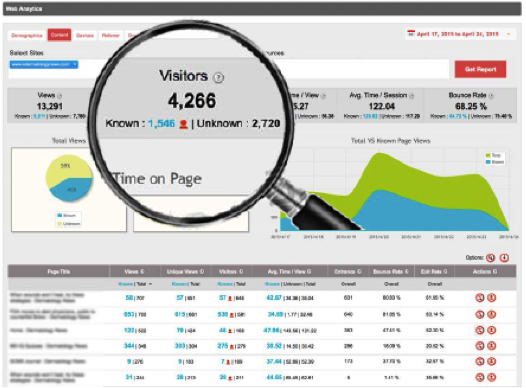
But lets try to demystify the term: The number of unique visitors is correlated to the way the analytics platform or tool defines a unique user.
Many tools (and staff too) set the definition at 30 minutes to capture a unique user. So, lets look at results: your site receives 3 million unique visitors per day. You remark, wow good result.
We are really reaching a lot of people. Well in this example the counter restarts every 30 minutes. So a “visitor” came to the site in the morning at 9am, read some content, closed the browser and left. 11am comes around, the visitor realizes he/she really liked the quote from the content but cant remember all the words. The visitor comes back and reads the story again and lifts the quote.
At 12pm as the visitor eats a sandwich he/she realized they forgot to save the document where they copied the quote. Must have accidentally closed it.
So the visitor comes back and lifts it again. Well on one hand, the visitor is a highly engaged reader for sure.
The importance of the recordation of the activity and the result can be debated and has been but in the end, he/she came to the site 3 times in the course of a 3 hour period and is captured as 3 unique visitors.
The resulting information is golden to a marketer hoping to increase “viewability” of an ad. The marketer had 3 views of the ad and yes your content had 3 views.
Yes the visitor apparently liked the content but you shouldn’t walk away thinking that there were 3 people that viewed the content. You should know that it was really 1 person. One could argue that a small interactive group of readers is highly valuable and you would be right in making that statement. The opportunity here is to know not guess or assume whether or not you have a small highly engaged group of readers.
Some organizations set the unique visitors at 24 hours. Yes there still is the chance to double count the same visitor as a unique but it does give you a better understanding of reality.
We all, we humans, love high percentages and immediately equate a high percentage as a good thing.
A high number is great to report. Is that what is important to you? Or do you tangibly want to know that your blood sweat and tears are well received, read and appreciated?
Session
Google recently moved away from reporting views and is now reporting sessions in Google Analytics. So lets look at what IAB defines as a session:
“1) A sequence of Internet activity made by one user at one site. If a user makes no request from a site during a 30 minute period of time, the next content or ad request would then constitute the beginning of a new visit; 2) a series of transactions performed by a user that can be tracked across successive Web sites. For example, in a single session, a user may start on a publisher’s Web site, click on an advertisement and then go to an advertiser’s Web site and make a purchase.”
Again, here is the 30-minute period. As previously mentioned, it is an accepted and respected practice. The result is great to understand overall impact.
But aren’t you really trying to understand the impact and use of your content?
Don’t you want to know the true number you are reaching?
Its great to have dedicated fans, we all want them, but it is also nice to know how many overall individual users one has for an overall site but also each content piece.
The 30 minute period and the tracking of activity does inform “click streams” which are an important source of understanding how users move and interact throughout your site. More about click streams shortly.
A report demonstrating the overall sessions of the site may be helpful. However, a report demonstrating sessions focused on your content pages moreso.
Ensure you are asking what comprises a user session on your sites and how that is reflective of the reading of your content. Ask for the sessions specifically related to your group of content pages and archives.
Bounce Rate is “the percentage of single-page sessions (i.e. sessions in which the person left your site from the entrance page without interacting with the page).”
There are a number of factors that contribute to a high bounce rate. For example, users might leave your site from the entrance page if there are site design or usability issues. Alternatively, users might also leave the site after viewing a single page if they’ve found the information they need on that one page, and had no need or interest in going to other pages.
Many start with looking at the session, visitors or page view reports and don’t stop to look at what the bounce rate is. All sites have a bounce rate. A normal bounce rate is around 30% noting there are uses; behaviors and other actions that are going to happen and that can’t be avoided.
The golden nugget insight is to compare the sessions, visitors or page views in correlation to the bounce rate to help reveal what traffic and use really looks like on your site.
Do become concerned when you see a bounce rate over 35%. A recent client of mine thought their traffic was terrific until I showed them their bounce rate was 65%. There were a few technical and structural decisions they made over time that added to the percentage. Once fixed, they were still in the 50% range.
IAB Definition: “The amount of elapsed time from the initiation of a visit to the last audience activity associated with that visit. Time spent should represent the activity of a single cookied browser or user for a single access session to the website or property.”
Most publishers consider a session continuous if and only if not broken by more than 30 minutes of inactivity. Do you see the continual theme of 30 minutes?
This definition is clear but what you need to be asking is what activity makes up the time spent? Is it using help pages? Trolling search results? Or reading your content? How is the bounce rate impacting the results, How many pages are recorded as 0 time spent.
Ask your analytics resource what he or she is measuring? The segmenting can be incredibly insightful to you.
Time on Page and Time on Site
Here are some basic points to know:
Don’t obsess over Time on Page or Time on Site. Unfortunately, the metrics are flawed in how they are collected and can skew your analysis. Keep the limitations in mind while analyzing content performance. A similar reporting issue exists if you are considering “viewability”of Ads. What is important is gaining the overall view into time spent but recognize the limitations.
Time on Page does not include exits or bounces and can inaccurately report actual time on the content page. It can be much lower or much higher than reported…
Time on Site does include bounces, but still cannot determine the actual length of time spent on exit pages. Therefore, this number can also be way off.
Next I want to cover the concept of a “Click”. The Click is probably one of the most important activities to digital. A Click translates to activity of the user. We send an email, we tweet or post to Facebook and hope for a “click” to our content. We offer a website full of content that we hope a visitor will “click” through to access and consume (or purchase). There are various definitions of a “click” due to tracking user behaviors, the interaction with an Ad, quantification of a marketing email, response to a marketing message on a page and navigating to content. The major different types of “click” are Click Through Rate better known as CTR, the Click-Through and the Click-Within. What you most want to be concerned with is the overall “click” activity in your content pages; specific to content, images and other resources provided with and surrounding a story.
You want to know what the behaviors are. Are the relevant resources provided being used and how your “readers” are navigating the story. The CTR of an Ad and the viewability of an Ad are important of course but they are a desired outcome of the click activity resulting from your great content not the reverse.
Click Through Rate/CLICK
“Click through rate – (CTR) the percentage of impressions that were clicked on as compared to the entire number of clicks [CTR% = (Clicks ÷ Imps) x 100]”
Click-through
“The measurement of a user clicking on a link that re-directs the user’s web enabled device to another Web destination.”
Click-within
“Similar to click down or click. But more commonly, click-withins are ads that allow the user to “drill down” and click, while remaining in the advertisement, not leaving the site on which they are residing.”
So far, I have covered page views, sessions, bounce rate, unique visitors, and clicks. Each, if understood and interpreted appropriately, can provide great insight and intelligence.
In the third part of this blog series I will cover how each of the individual items along with the click come together to provide you great insight into the success of your headlines, how you can use the findings to measure your word choices and how you can move beyond typical A/B testing.
Now on to “click-streams”the highly informative and highly visual way to look at user behaviors and clicks throughout your content.
Click-stream
IAB Definition:“1) the electronic path a user takes while navigating from site to site, and from page to page within a site; 2) a comprehensive body of data describing the sequence of activity between a user’s browser and any other Internet resource, such as a Web site or third party ad server.”
The Click Stream is one of the best opportunities to gain insight into consumption and user behaviors as users interact with your content. Individual metrics in a report show single pages and the resulting views but you don’t really gain the whole picture of how the users consumed your content. A Click Stream demonstrates how a user came to the site, how the user navigated the site and ultimately what they consumed.
As an example:
A user navigated to a piece of content (of course that page view is recorded in the mentioned report) but then click on and watched the video, then following their path you can see that they went to the archives to read about additional topics you have posted. By reviewing the click stream information you can determine what and which of your main and surrounding content was consumed, gain insight into potential adjustments you may want to make, ie perhaps the articles listed in the archive aren’t generating any views when the main article is read so you replace them with others.
Adding to the value of click stream information is “understanding” how your users are coming to your site and consuming, engaging and interacting with your content.
Click-Streams additionally include the quantity of users who followed a particular stream. The quantity of users following a particular path can provide you insight to determine whether adjustments are necessary. Perhaps you need to move content into another or a series of categories. Perhaps the headline isn’t resonating and the story needs a new headline.
Data is your friend and can provide you with the insight to increase “readability”discoverability and consumption of your content.
In this blog post, I have attempted to cover the basics important to editors and publishers. The basic elements can provide you the foundation on which to begin creating a measurement strategy that informs your editorial plan and goals.
Here are some questions to ask you analytics, audience development or digital teams:
How are we tracking Visitors/Unique Visitors?
What is our bounce rate impact on sessions and views?
How are you measuring content pages?
Can you segment by user type?
Do we know named users?
In the next blog post of this 3 part series, I will demonstrate how each of these basic elements rolls up to determine the large analytical measure groupings of Engagement, Consumption, Retention, Amplification and Social. I will also share how Amplification is a two way street that includes the critical importance of distribution.
The third in this series will focus on using analytics to derive insights into headline performance. Looking back historically to evaluate performance and looking forward to predict future behaviors and performance.
If you or your organization needs help in any of these areas, please give me a call or drop me an email.
I relish the opportunity to work with organizations to help them understand analytics and aid in prioritizing what is most important for your content and increasing your relevance in a noisy world.
I hope you found the post informative. Please let me know if you have any questions or comments.



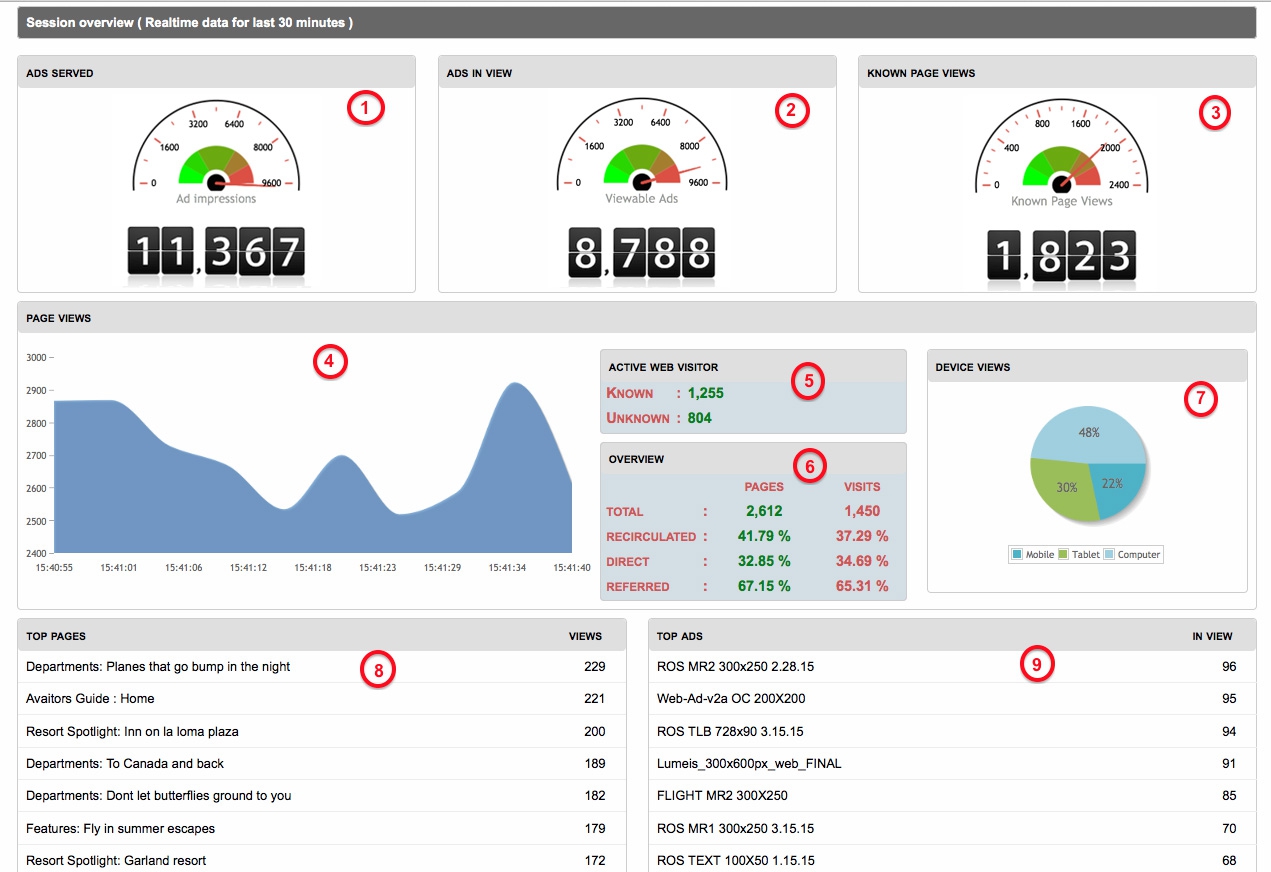
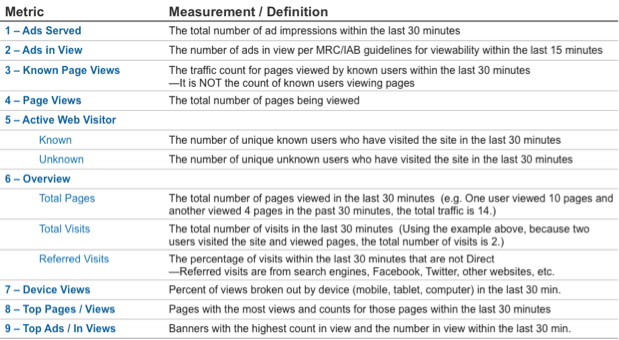
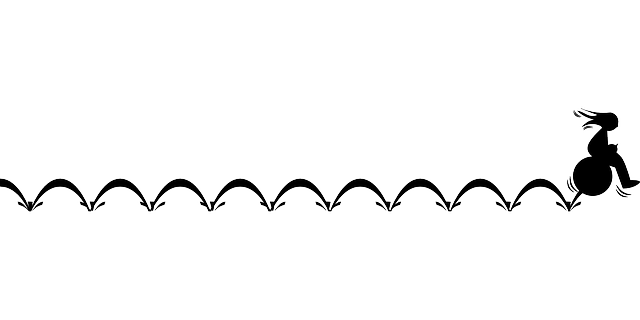

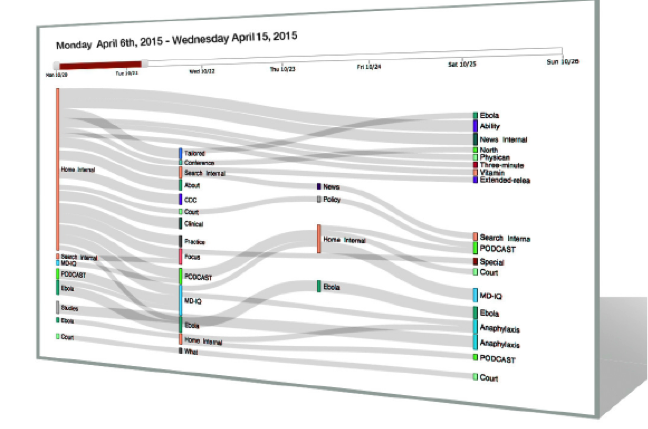
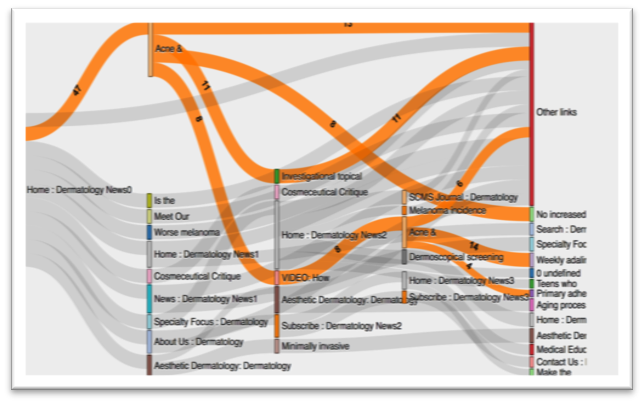




This Post Has 0 Comments